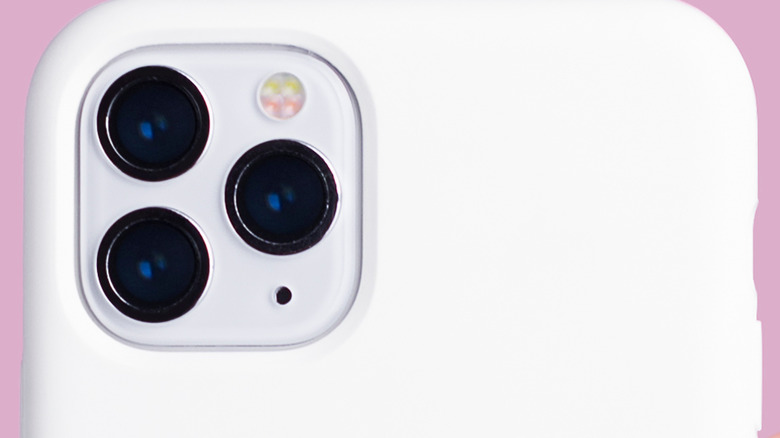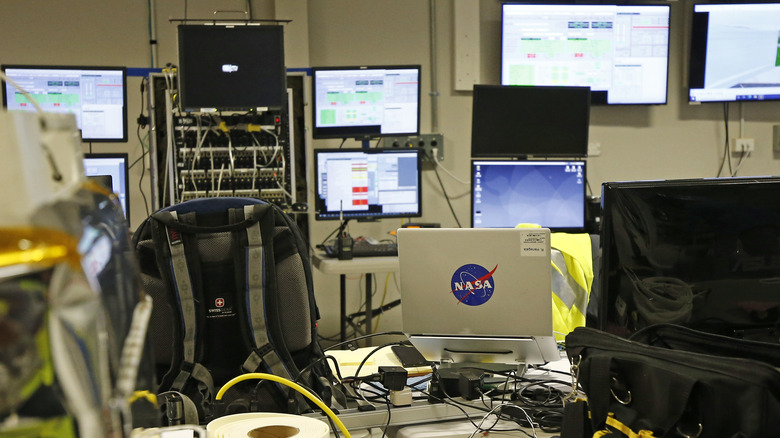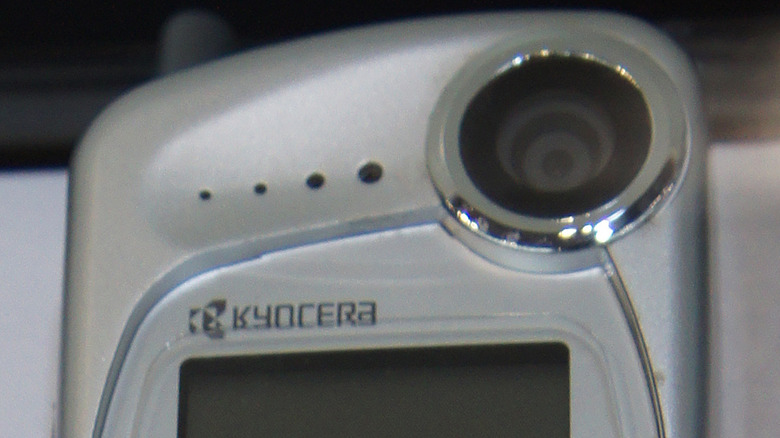How NASA Helped With The Creation Of Cell Phone Cameras
NASA's achievements in aeronautics and technology cannot be understated. The list is long, but some of their most iconic credits would be the 1969 moon landing and the Mars Exploration Rover program, as said by ABC News. The list of contributions NASA has made to the fields of science and engineering have also helped develop some everyday household items. For example, the memory foam that is widely used in many things like mattresses and shoes, was first developed by NASA researchers, as explained by NASA.
Many of NASA's contributions to regular society came about from exploration and the development of technology related to aeronautics in order to better improve space flight or the experience of their astronauts. And, while their list of technological aids to mankind continues to grow there is one addition to society that pretty much all of social media, all influencers, and anyone who's taken a selfie should be thankful for: the digital camera. Yep, NASA had a profoundly instrumental hand in helping to develop early digital camera technology (via NASA).
The history of the digital camera began in 1961
The first portable digital camera was created in 1975 by Steven Sasson, an engineer at Eastman Kodak, according to CNET. This invention revolutionized photography, but its roots are actually a bit earlier than that. NASA is known for many things, and one engineer came up with the technology that eventually led to the first digital camera: Eugene Lally (via NASA)
As said by CNET, NASA needed a way to determine the positions of astronauts in space. That is where Eugene Lally of Jet Propulsion Laboratory came in. Lally was working on how to solve this problem in 1961 through the implementation of mosaic photosensors. As explained by Techopedia, a photosensor is basically a tool that uses electromagnetic signals when receiving or sending data. It is also used in fiber optics technology as well as in remote controls.
This was Lally's idea as a way of photographing astronauts in space, so as to help determine their position. In Davide Sivolella's book "Space Mining and Manufacturing: Off-World Resources and Revolutionary Engineering Techniques," Lally's contributions to image technology would then make ripples in the scientific community.
Eugene Lally's imaging technology was further developed for space
The primary function of Eugene Lally's imaging technology research was to figure out a peculiar problem: digitizing light signals. But first, it may help to have a basic understanding of how cameras work.
Traditional photography, or film photography, relies on strips of film, which are basically malleable pieces of plastic made from cellulose and covered with compound chemicals. As Explain That Stuff says, this material is fairly sensitive to light, meaning that once the camera button is pushed and the shutter opens, the film strips capture the light that hits them, recording all of the visual information.
Digital cameras work almost the same way, but with electronics that create electrical signals from light rays. Lally's proposed technology in 1961 to create digital photography using electronics was further developed by Bell Labs in 1973. As explained by the Search for Extraterrestrial Intelligence Institute (SETI), Bell Labs was able to create a photo detector array, using ideas from Lally, which was then instrumental in developing the first digital camera ever made.
As Computer World says, this technology eventually found its way into cellphones in the year 1999, when the company Kyocera released the world's first camera phone: the VP-210 (pictured). All of this was made possible because of NASA and Lally's initial concepts and engineering. One should keep that in mind the next time they shoot a selfie.


